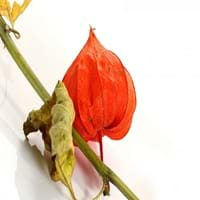Health Benefits
Anti-oxidant properties, Anti-inflammatory properties, Cancer prevention, Maintains healthy cholesterol level, Reduces blood circulation problems, Treatment of cough, fever & sore throat, Treatment of Hypertension
Anti-aging benefits, Anti-inflammatory properties, Asthma treatment, Body hydration, Cancer prevention, Digestive aid, Skin cleansing, Skin rejuvenation
General Benefits
Treatment of asthma, Treatment of cataract, Treatment of hepatitis, Treatment of macular degeneration, Treatment of neurodegenerative diseases
Anti-inflammatory properties, Body hydration, Controls blood pressure, Digestive aid, Maintains healthy cholesterol level
Skin Benefits
Treatment of Rheumatism & Dermatitis, Treatment of Skin Inflammation
Anti-aging benefits, Brightens and lightens complexion, Hydrates skin
Hair Benefits
Unknown
Promotes longer and healthier hair, Regulates hair growth
Allergy Symptoms
NA
Breathing difficulty, Decrease in blood pressure, Dizziness, Eczema, Hives, Runny nose, Swelling of mouth, tongue or lips, Watery eyes
Side Effects
Hypertension, Ventricular Tachycardia
Allergic reaction, Bloating, Diarrhoea, Indigestion, Intestinal gas, Nausea, Vomiting
Best Time to Eat
As a snack in the late afternoon, Eat the fresh ones, avoid mixing with any other foods, don't eat after meal., Morning time (before lunch), Strictly avoid empty stomach
As a snack in the late afternoon, Don't consume at night and before bed, Eat the fresh ones, avoid mixing with any other foods, don't eat after meal., Strictly avoid empty stomach
Vitamin B5 (Pantothenic Acid)
Not Available
Vitamin B6 (Pyridoxin)
Not Available
Vitamin B9 (Folic acid)
Not Available
Vitamin C (Ascorbic Acid)
Vitamin K (Phyllochinone)
Not Available
Lutein+Zeaxanthin
Not Available
Phytosterol
Not Available
Water Content
Not Available
Calories in Fresh Fruit with Peel
Not Available
Calories in Fresh Fruit without Peel
Not Available
Calories in Frozen Form
Not Available
Not Available
Calories in Dried Form
Not Available
Calories in Canned Form
Not Available
Not Available
Type
Fruit vegetable
Berry, Melon
Season
Spring, Summer
Summer
Varieties
Physalis franchetii, Physalis pruinosa, Physalis peruviana, Physalis heterophylla and Physalis philadelphica
Sugar Baby, Sangria, Golden Midget, Starlight, Jubilee, Starbrite, Extazy, Stars 'n' Stripes, Mickylee, Yellow Baby, Yellow Doll, Little Baby Flower, Sweet Favorite and Cream of Saskatchewan
Color
Bright Yellow, Orange
Canary yellow, Coral red, Orange, Salmon yellow, Scarlet red, White
Origin
Chile, Peru
Southern Africa
Soil Type
NA
Sandy, Well-drained
Climatic Conditions
NA
Dry, Hot
Facts about
NA
- Watermelon contain 91% of water.
- In Japan & Chine, watermelon is a popular gift to bring a host.
- Entire watermelon is edible, even the rinds & seeds.
- There are more than 1200 varieties grown in the world.
Other Countries
NA
Algeria, Brazil, Egypt, Iran, Kazakhstan, Mexico, Spain, Turkey, United States of America
Top Importer
Netherlands
Germany
Top Exporter
Colombia
China
Botanical Name
Physalis Peruviana
Citrullus Lanatus
Synonym
Alkekengi, Herschellia & Pentaphitrum
Citrullus vulgaris
Subkingdom
Tracheobionta
Tracheobionta
Division
Magnoliophyta
Magnoliophyta
Class
Magnoliopsida
Magnoliopsida
Subclass
Asteridae
Dillenhidae
Order
Solanales
Cucurbitales
Family
Solanaceae
Cucurbitaceae
Species
Physalis
C. lanatus
Generic Group
Not Available
Gourd
Difference Between Physalis and Watermelon
We might think that Physalis and Watermelon are similar with respect to nutritional value and health benefits. But the nutrient content of both fruits is different. Physalis and Watermelon Facts such as their taste, shape, color, and size are also distinct. The difference between Physalis and Watermelon is explained here.
The amount of calories in 100 gm of fresh Physalis and Watermelon with peel is 77.00 kcal and Not Available and the amount of calories without peel is Not Available and 30.00 kcal respectively. Thus, Physalis and Watermelon belong to High Calorie Fruits and Low Calorie Fruits category.These fruits might or might not differ with respect to their scientific classification. The order of Physalis and Watermelon is Solanales and Cucurbitales respectively. Physalis belongs to Solanaceae family and Watermelon belongs to Cucurbitaceae family. Physalis belongs to Physalis genus of Physalis species and Watermelon belongs to Citrullus genus of C. lanatus species. Beings plants, both fruits belong to Plantae Kingdom.









